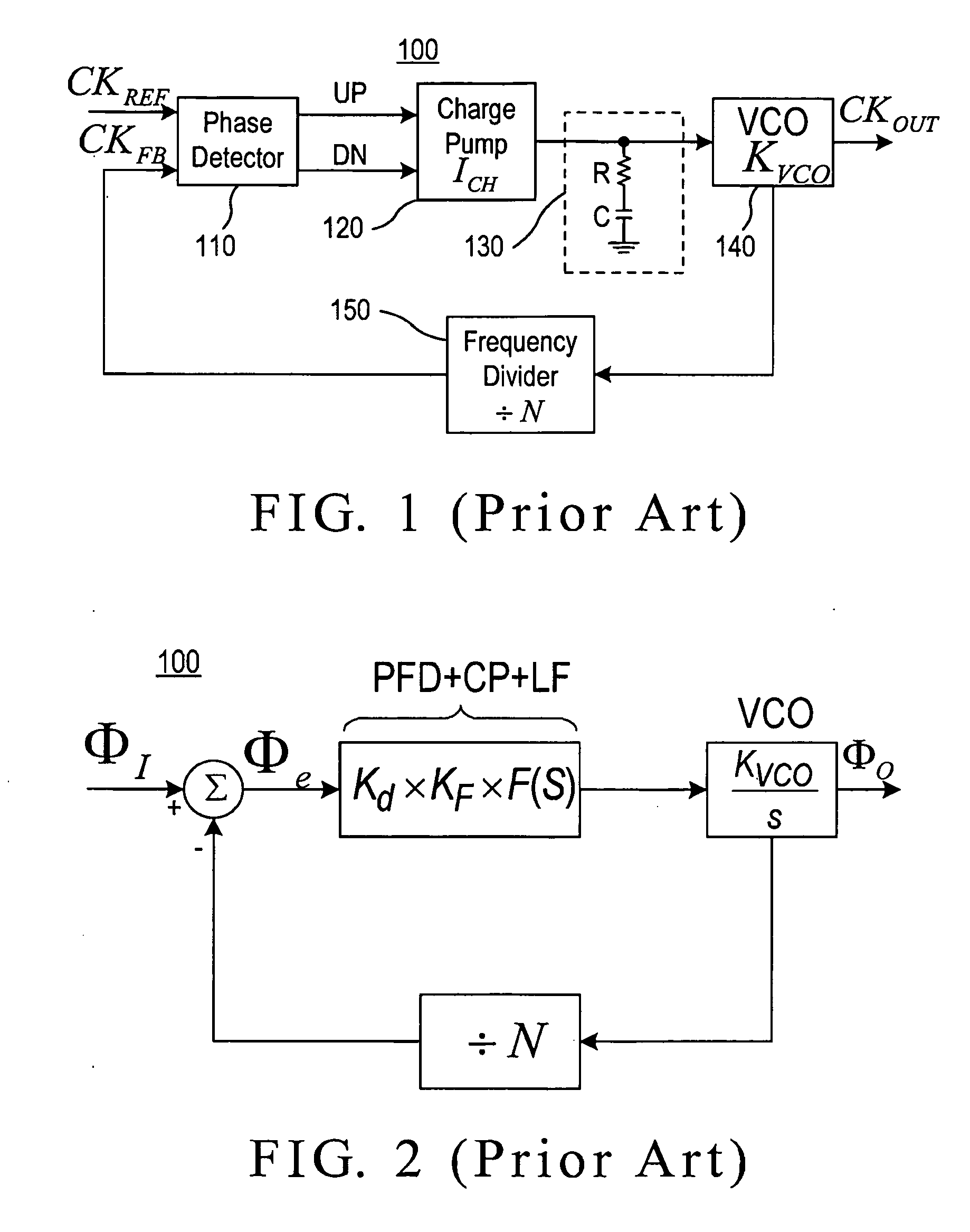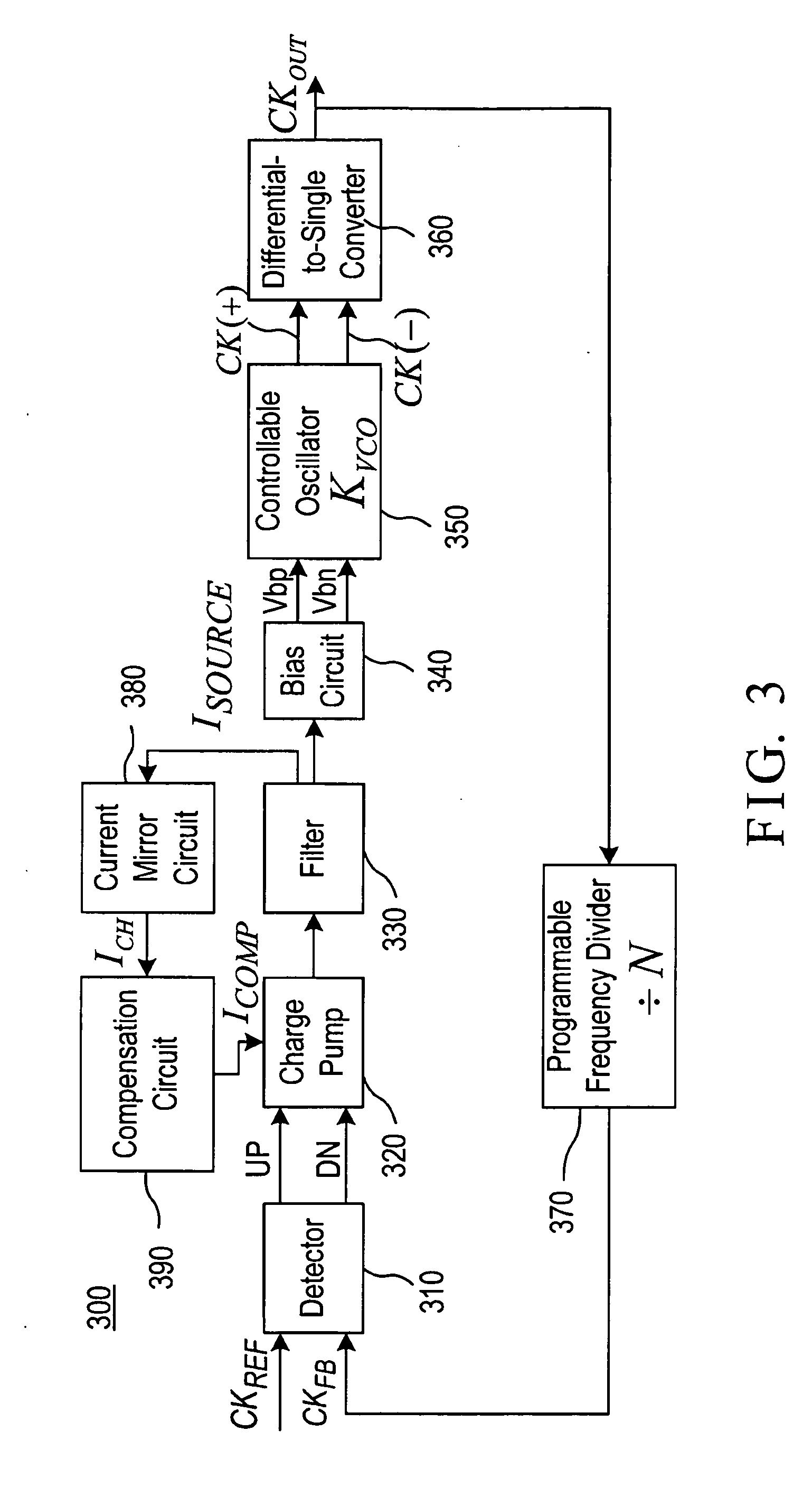Frequency synthesis system with self-calibrated loop stability and bandwidth
a frequency synthesis and self-calibration technology, applied in the field of phaselocked loops, can solve the problems of increasing the development cost of different pll designs and tests, the difficulty of design, and the jitter of the wimax receiver, so as to achieve the effect of low jitter, more load capacitance, and low voltage environmen
- Summary
- Abstract
- Description
- Claims
- Application Information
AI Technical Summary
Benefits of technology
Problems solved by technology
Method used
Image
Examples
Embodiment Construction
[0040]FIG. 3 is a block diagram of a frequency synthesis system 300 with self-calibrated loop stability and bandwidth according to an embodiment of the invention. The system 300 produces an output signal based on an input signal. In FIG. 3, the system 300 includes a detector 310, a charge pump 320, a filter 330, a bias circuit 340, a controllable oscillator 350, a differential-to-single converter 360, a programmable frequency divider 370, a current mirror circuit 380 and a compensation circuit 390.
[0041]The detector 310 produces a detection signal based on a logic level difference between the input signal CKREF and a feedback signal CKFB The detector 310 adjusts the detection signal based on a phase leading or lagging relationship between the input signal CKREF and the feedback signal CKFB. The detection signal includes a frequency up signal UP and a frequency down signal DN.
[0042]When the phase of the input signal CKREF lags that of the feedback signal CKFB, the detector 310 output...
PUM
 Login to View More
Login to View More Abstract
Description
Claims
Application Information
 Login to View More
Login to View More - R&D
- Intellectual Property
- Life Sciences
- Materials
- Tech Scout
- Unparalleled Data Quality
- Higher Quality Content
- 60% Fewer Hallucinations
Browse by: Latest US Patents, China's latest patents, Technical Efficacy Thesaurus, Application Domain, Technology Topic, Popular Technical Reports.
© 2025 PatSnap. All rights reserved.Legal|Privacy policy|Modern Slavery Act Transparency Statement|Sitemap|About US| Contact US: help@patsnap.com



